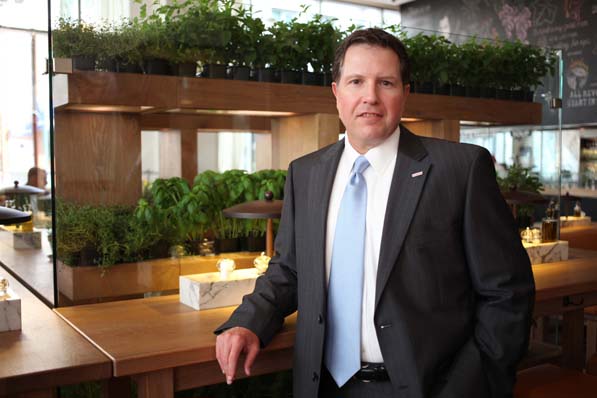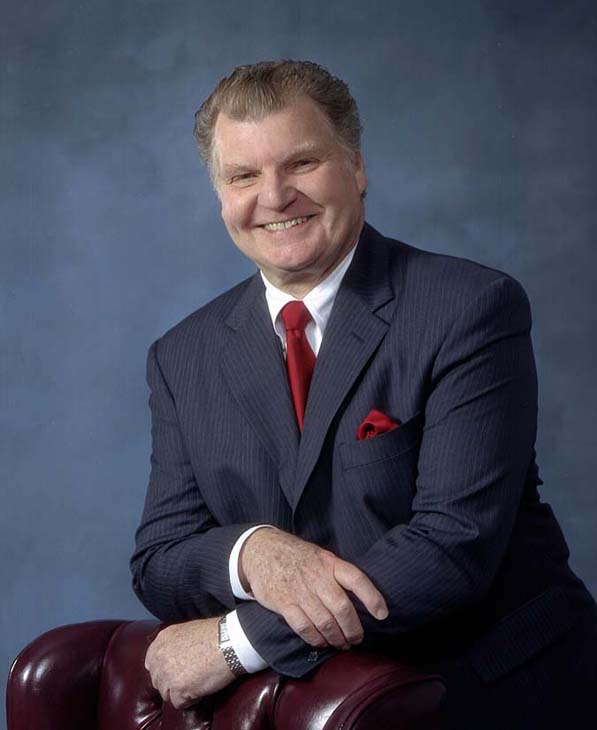Charlie Corsentino isn’t just a big name in exhibit design—he’s a big name in business, too. As the chairman, president, and CEO of Moss Inc., Corsentino nearly doubled Moss’s revenue from $27 million to $50 million in his first year and a half at the company. He’s also a recipient of the 2011 Hazel Hayes Award presented by the Exhibit Designers and Producers Association. Profile sat down with him to learn more of his work, and what it means to do good business.
How did your early career take you to where you are now?
Corsentino: I’ve been running companies since I was 32 years old. I’ve run everything from high-speed industrial manufacturing all the way to store fixtures, exhibit manufacturing, marketing, and design. From metals and copper manufacturing, I went to work for a well-known retail fixture company, and after I was there for a year or so, I joined Exhibit Group as the president and general manager in 1990. Greyhound Bus Lines owned the company at the time. After 18 months there, developing strategies to help turn around the New York Division, I became the president and CEO of the entire subsidiary, and, though the company had six plants and was doing around $70 million, Exhibit Group wasn’t making any money.
What are some things you did as CEO to help the company turn around?
Corsentino: Exhibit Group became a subsidiary of Dial [the soap company], and with
this change in leadership, we took the company from $70 million to $130 million
organically, without any acquisitions. I consulted with the chairman of Dial at the time, and we then acquired our biggest competitor: Giltspur. They were worth around $130 million and making the same profit as us. We also bought a company called Display Masters in Minneapolis and brought Exhibit Group from $130 million to $278 million overnight. In a year, we went from 700 to 1,500 clients and to 22 plants nationwide.

Stay Tough: “You’re going to get knocked down in your career. You need to get up as quickly as possible and try 10-times harder to overcome adversity. With a strong will to succeed you will always be much better off.”—Charlie Corsentino
With things going so well, what led to your retirement?
Corsentino: After those acquisitions, we bought 15 more companies and took Exhibit Group to around $500 million. We were the largest exhibit-design company in the world, with 19 plants, over 2,000 people employed, and over 250 account executives worldwide. From the strategy of rolling up trade-show companies we were able to generate profits that increased no less than 20 percent each year for 10 years. We were one of Dial’s premier subsidiaries, but when the chairman retired, I decided to retire and began working as a consultant for venture capital firms.
But it wasn’t a full retirement.
Corsentino: When I left, I realized that I didn’t want to work for public companies anymore, so I moved into venture-capital consulting. After some consultant work, the Riverside Company, a major venture-capital company with a $2.8 billion portfolio, recruited me and put me on the board for Moss, which was doing around $27 million at that time, with modest EBITDA profits. When Riverside acquired Moss, it was doing around $13.5
million, and though revenues had increased to $27 million,
the profits hadn’t, so they asked if I would be the CEO and
chairman.
What were things you did to put Moss “in the right?”
Corsentino: In the first year and a half I was there, we went from $27 million to $50 million and the profit increased threefold. Before I came to the company, Moss was very arrogant with their pricing, at 35–40 percent above their competitors, thus
allowing competition into the industry. They were losing business. So when I came on, we cut out $5 million of overhead, lowered the prices, and our volume took off. We also got into acquisitions, first buying a company called Nichols, who was a display hardware and printing company and doing around $17 million at the time.
What are you looking forward to accomplishing at Moss?
Corsentino: Venture-capital companies will usually hold on to a company for five years, and once the company has made acquisitions and become more profitable, it will be sold. Moss was doing well, so Riverside sold it to its current owners, Century Park Capital Partners. They acquired Moss in 2008 as a platform company to add on acquisitions. Of course, we went into a major recession, but they knew Moss had an excellent management team. We probably lost around $14 million of sales in one year, but we developed a strategy to change the company. Trade shows are our core business, but trade shows are cyclical and there’s downtime. So we’ve diversified, going heavy into retail, rebranding ourselves on the market as Visual Impulse. We also bought a bankrupt company, Pink, who was in the event business. We weren’t really known as an event business, but we needed a brand, so we bought Pink. We also went into sports branding by acquiring Flying Colors. But retail is where we think we’re really going to take off. Trade shows are our core, but retail is a billion-dollar industry and offers considerable opportunities for Moss to grow.
With a lot of experience, and coming back out of retirement, what keeps you motivated?
Corsentino: I love what I do. I don’t have a lot of outside hobbies. My family comes first, and I always tell my employees that their families should come first, too. If your family isn’t happy, you won’t be happy. And beyond that, I also really enjoy mentoring people. I’m probably a pretty tough manager, but I’m fair. You always know where you stand with me. People are your most important asset, and if you don’t have good people, you don’t have anything.















